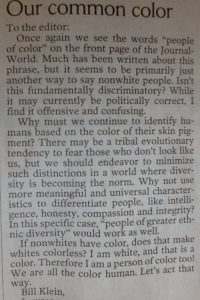In May 2022 I decided it was time to take a break from government service. I had been working with and in governments since 2015 and I was tired. I had the privilege and luxury to change jobs and start working in the climate change mitigation problem space.
Below is the spiel I gave my co-workers at Truss on my last day. Truss was a tremendous place to work and if you’re interested in the kinds of technical and organizational challenges that are their speciality, I recommend you give them a look.
I’ve duplicated the spiel text directly, so a few notes. One, Truss employees refer to themselves as Trussels. Two, Truss is a fully distributed company and so all the weekly all-hands meetings, or what they call “Prac” (short for Practioners’ meeting), are all on Zoom and most company communication happens via Slack. Three, there’s some salty language, and you may lose some of the affect in reading it versus hearing it. So just try to imagine my serene, Midwestern, public-radio-like, dulcet tones if you can.
If you have small people with you on this zoom call, you might want to mute the audio or put on headphones because I’m about to use some adult language.
There have been a few old timer Trussels who have left the company in the last few months. One of the things I’ve heard them say is they miss how the Truss culture has changed. I am not one of them. I know that culture is always an artifact of who is present, and when a company grows as quickly as Truss has, there’s no way that the culture would remain the same. One thing I have noticed, though, as perhaps a bellwether of that cultural change, is the relative decline of the word “fuck” in Prac meetings. Maybe it’s a subtle self-censorship, as if with so many new people we’re trying to practice a little more polite company etiquette. Maybe not. Certainly we’re living in unprecedented times, so my anecdata is exactly that. In any case, if you’re one of those who bemoan the loss of Truss culture, don’t worry. In the next 3 minutes I’m going to significantly raise the average number of utterances of the word “fuck” dropped during Prac.
I’m going to drop a visual aid into the #prac channel.
I’ve always thought that the word “fuck” is a little like the word “smurf” in that it can mean anything you want it to, entirely dependent on the tone and context in which you use it. If you’re offended by the word “fuck” I completely understand. I was raised in a conservative evangelical family and until I was in middle school, I thought the “f-word” was “fart.” Even to this day, I feel more squeamish saying “fart” aloud than I do saying “fuck” aloud. So now I’ve said both words aloud in a single sentence, and yes, even at age 50, I can confirm that the strange-ness persists.
My own need for therapy aside, I’d like to share my thoughts on two phrases with you on this, my last day at Truss. My dearest hope is that you will hear what I have to say and then actively resist and even reject it. Hopefully you’ll see what I mean by the end.
The first phrase is “give a fuck.” Or its inflammable counterpart, “don’t give a fuck.” I say “inflammable” because “give a fuck” and “don’t give a fuck” seem like opposites but can mean the same thing depending on how you say them, much the way that “flammable” and “inflammable” appear to be opposites but actually mean the same thing. To “give a fuck” means to strongly care about something. But if someone says, in an emotionally strong tone of voice, that they don’t give a fuck, then I suspect they actually do give a fuck. There’s a corollary: “fucks to give” as in “I’ve run out of fucks to give.” And of course, the old chestnut, “what the fuck” which is what you say when you give a fuck but wish you didn’t. I could go on. We have a funny language.
I like people who give a fuck. I feel a certain comradery with them, even if the things they give a fuck about are different than the things I give a fuck about. I have a hard time understanding people who don’t give a fuck about anything. Usually I suspect they are just in the closet about what they give a fuck about, and are afraid of disappointment. That’s what cynicism is: the fear of appearing to give a fuck. As we know, cynics are disappointed idealists. And if there’s anyone who really gives a fuck, it’s an idealist.
I mention giving a fuck and not giving a fuck because of a second phrase I’d like to introduce you to: civic chill. This is a phrase I made up to describe a particular kind of being in the world. Have you ever met another human, especially an older person, like an activist or social worker or community organizer, who seems to both give a fuck and not give a fuck, simultaneously? Like, they are ready to march in the streets, get up in the face of the powerful, agitate and advocate for what needs to be changed, and yet they seem totally chill, relaxed and trusting at the same time? That’s what I mean by civic chill. It’s a passionately detached engagement. It’s the simultaneous embodiment of believing that what you are doing and saying really matter in a crucially important way, and that they are also doomed to fail. It’s a paradoxical tension in the best Kierkegaardian sense.
Some of you know where I’m going with this. And some of you are googling Kierkegaardian.
The kind of work Truss does in and with governments may require a great deal of civic chill. Or not. Whenever you start a project, the odds are not in your favor that you will ever ship something to production. Most often, failure to ship is not a technical problem and most often it is completely out of your control. It’s one of the many tech-in-government problems that are not about technology but are instead about compliance and procurement and budgets and organizational inertia. If you manage to ship, great! Celebrate! If you fail to ship, recognize that there are many forces aligned against you and it’s likely not your fault.
So you have to start each day holding two contradictory beliefs: what you are doing really matters, and likely it will fail and not matter.
Even though I have, temporarily (I hope), currently lost my civic chill, I am still going to share with you my secret for how I keep it when I’m able to. The secret is: give a fuck, really give it. Then give it away. And then celebrate the privilege and opportunity to give a fuck. What a gift.
Alright my friends. I wish for you the freedom to both give a fuck, and not; to dwell in your civic chill, and not; to make good coffee, and not. Peace.

